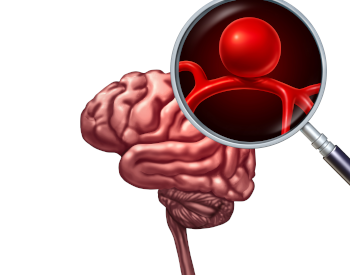For some medical conditions, like a cerebral aneurysm, early diagnosis and treatment are the key to a cure. Feldman Shepherd medical malpractice attorneys have handled numerous cases in which there was an unreasonable delay on the part of a healthcare provider in recognizing and treating cerebral aneurysms, resulting in unnecessary and severe injuries to the patient.
What Is a Cerebral Aneurysm?
A cerebral aneurysm, also known as an intracranial aneurysm, is an abnormal bulging or ballooning of an artery in the brain that can put pressure on surrounding nerves and brain tissue. A cerebral aneurysm can be identified using a variety of screening and imaging tests and can be treated using endovascular (coiling, flow diverting) or exovascular (clipping) techniques. Left untreated, an aneurysm can rupture (hemorrhage) with devastating consequences, including neurologic injuries and death.
Here are radiologic images of the two types of cerebral aneurysms:
Will I Die from a Ruptured Cerebral Aneurysm?
It is estimated that as much as five percent of the U.S. population has an undetected aneurysm. The danger lies in the fact that aneurysms form as the result of a weakening or thinning of the wall of a blood vessel, making them prone to rupture (hemorrhage) which results in bleeding into or around the brain. Once an aneurysm ruptures, 10% to 15% of patients die before reaching medical care and up to 50% die within two weeks. Of those patients who do survive, 30% suffer a moderate or severe disability and most are unable to return to the same quality of life they enjoyed prior to the rupture.
What Are the Symptoms of a Cerebral Aneurysm?
Fortunately, utilizing current and proper diagnostic techniques, doctors can often diagnose and treat aneurysms before they rupture. When a cerebral aneurysm is large enough to press on surrounding nerves and brain tissue, the patient will often experience one or more neurological symptoms, including unilateral (one-sided) headache, blurred or double vision, ptosis (a drooping eyelid), pain above or behind one eye, a dilated pupil, numbness of one side of the face, or sensitivity to light. Patients with these symptoms will typically be referred to a specialist, such as a neuro-ophthalmologist, who will order tests to determine whether an aneurysm exists and, if so, whether it has already ruptured. Common tests include Computed Tomography (CT) scans, CT angiography, Magnetic Resonance Imaging (MRI) and Magnetic Resonance Angiography (MRA), as well as Cerebral Angiography and Cerebrospinal Fluid (CSF) analysis.
How Is an Unruptured Cerebral Aneurysm Treated?
If testing reveals an unruptured aneurysm, the patient will be referred to a neurosurgeon to evaluate the treatment options, which, according to the National Institutes of Health, include:
- Microvascular clipping. This procedure involves cutting off the flow of blood to the aneurysm and requires open brain surgery. A doctor will locate the blood vessels that feed the aneurysm and place a tiny, metal, clothespin-like clip on the aneurysm’s neck to stop its blood supply. Clipping has been shown to be highly effective, depending on the location, size, and shape of the aneurysm. In general, aneurysms that are completely clipped do not recur.
- Platinum coil embolization. This procedure is a less invasive procedure than microvascular surgical clipping. A doctor will insert a hollow plastic tube (a catheter) into an artery, usually in the groin, and thread it through the body to the brain aneurysm. Using a wire, the doctor will pass detachable coils (tiny spirals of platinum wire) through the catheter and release them into the aneurysm. The coils block the aneurysm and reduce the flow of blood into the aneurysm. The procedure may need to be performed more than once during the person’s lifetime because aneurysms treated with coiling can sometimes recur.
- Flow diversion devices. Other endovascular treatment options include placing a small stent (flexible mesh tube) similar to those placed for heart blockages, in the artery to reduce blood flow into the aneurysm. A doctor will insert a hollow plastic tube (a catheter) into an artery, usually in the groin, and thread it through the body to the artery on which the aneurysm is located. This procedure is used to treat very large aneurysms and those that cannot be treated with surgery or platinum coil embolization.
If Treated, Will I Survive a Cerebral Aneurysm?
Multiple studies of outcomes following treatment of routine aneurysms have shown mortality rates of less than 4% and morbidity of less than 10%, depending upon aneurysm size, location, patient age and other factors. The improved outcomes highlight the importance of early intervention to avoid rupture.
